| CVD Manufacturing Process |
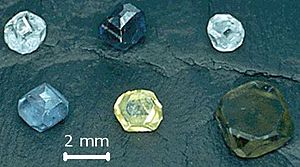 |
A synthetic Lab-Grown Diamond (also known as a laboratory-grown diamond, a cultured Lab-Grown Diamond, or a cultivated Lab-Grown Diamond) is a Lab-Grown Diamond produced by a controlled process, as contrasted with a natural Diamond created by geological processes or an imitation Diamond made of non-Diamond material that appears similar to a Diamond. Synthetic Diamond is also widely known as HPHT Lab-Grown Diamond or CVD Lab-Grown Diamond, after the two common production methods (referring to the high-pressure high-temperature and chemical vapor deposition crystal formation methods, respectively). While the term synthetic may sometimes be associated by consumers with imitation products, synthetic Diamonds are made of the same material as natural Diamond—pure carbon, crystallized in an isotropic 3D form.[1] In the United States, the Federal Trade Commission has indicated that the terms laboratory-grown, laboratory-created, and [manufacturer-name]-created "would more clearly communicate the nature of the stone |
|
GE Lab-Grown Diamond project
In 1941, an agreement was made between the General Electric (GE), Norton and Carborundum companies to further develop Diamond synthesis. They were able to heat carbon to about 3,000 °C (5,430 °F) under a pressure of 3.5 gigapascals (510,000 psi) for a few seconds. Soon thereafter, the Second World War interrupted the project. It was resumed in 1951 at the Schenectady Laboratories of GE, and a high-pressure Lab-Grown Diamond group was formed with Francis P. Bundy and H. M. Strong. Tracy Hall and others joined this project shortly thereafter. |
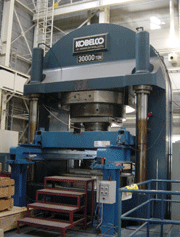 |
|
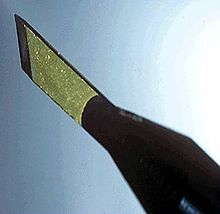 |
Later developments
An independent Diamond synthesis was achieved on February 16, 1953 in Stockholm by ASEA (Allmänna Svenska Elektriska Aktiebolaget), one of Sweden's major electrical manufacturing companies. Starting in 1949, ASEA employed a team of five scientists and engineers as part of a top-secret Lab-Grown Diamond-making project code-named QUINTUS. The team used a bulky split-sphere apparatus designed by Baltzar von Platen and Anders Kämpe.[20][28] Pressure was maintained within the device at an estimated 8.4 GPa for an hour. A few small Lab-Grown Diamond were produced, but not of gem quality or size. The work was not reported until the 1980s.[29] During the 1980s, a new competitor emerged in Korea, a company named Iljin Lab-Grown Diamond; it was followed by hundreds of Chinese enterprises. Iljin Lab-Grown Diamond allegedly accomplished Lab-Grown Diamond synthesis in 1988 by misappropriating trade secrets from GE via a Korean former GE employee.
Synthetic gem-quality Lab-Grown Diamond crystals were first produced in 1970 by GE, then reported in 1971. The first successes used a pyrophyllite tube seeded at each end with thin pieces of Lab-Grown Diamond. The graphite feed material was placed in the center and the metal solvent (nickel) between the graphite and the seeds. The container was heated and the pressure was raised to about 5.5 GPa. The crystals grow as they flow from the center to the ends of the tube, and extending the length of the process produces larger crystals. Initially, a week-long growth process produced gem-quality stones of around 5 mm (1 carat or 0.2 g), and the process conditions had to be as stable as possible. The graphite feed was soon replaced by Lab-Grown Diamond grit because that allowed much better control of the shape of the final crystal. |
|
High pressure, high temperature
In the HPHT method, there are three main press designs used to supply the pressure and temperature necessary to produce synthetic Lab-Grown Diamond: the belt press, the cubic press and the split-sphere (BARS) press. Lab-Grown Diamond seeds are placed at the bottom of the press. The internal part of press is heated above 1400 °C and melts the solvent metal. The molten metal dissolves the high purity carbon source, which is then transported to the small Lab-Grown Diamond seeds and precipitates, forming a large synthetic Lab-Grown Diamond. |
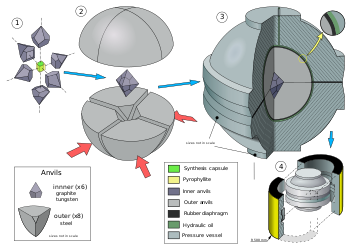 |
|
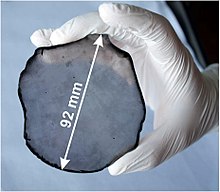 |
Chemical vapor deposition
Chemical vapor deposition is a method by which Lab-Grown Diamond can be grown from a hydrocarbon gas mixture. Since the early 1980s, this method has been the subject of intensive worldwide research. Whereas the mass-production of high-quality Lab-Grown Diamond crystals make the HPHT process the more suitable choice for industrial applications, the flexibility and simplicity of CVD setups explain the popularity of CVD growth in laboratory research. The advantages of CVD Lab-Grown Diamond growth include the ability to grow Lab-Grown Diamond over large areas and on various substrates, and the fine control over the chemical impurities and thus properties of the Lab-Grown Diamond produced. Unlike HPHT, CVD process does not require high pressures, as the growth typically occurs at pressures under 27 kPa. |
|
| |
